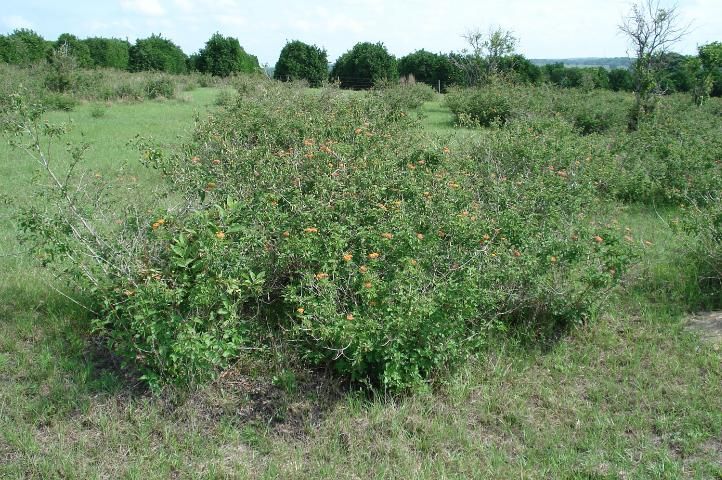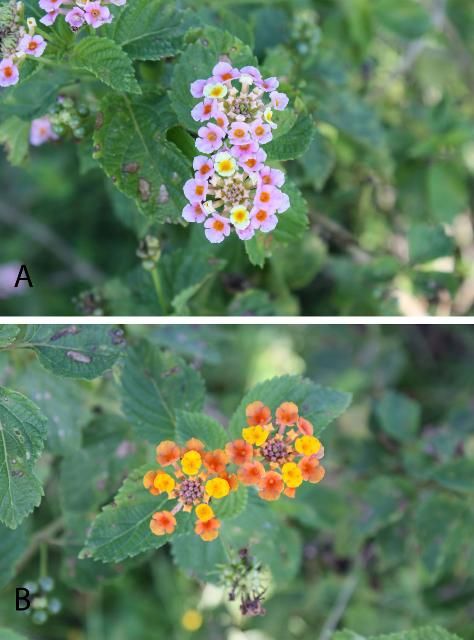Introduction
Lantana (Lantana camara) is a woody member of the Verbenaceae plant family that is native to the tropical Americas (Figure 1). This plant flowers abundantly throughout much of the growing season and was first introduced in many southern states as a perennial ornamental. Because of the plant's ornamental nature, many different flower colors exist, but the most common color combinations are red/yellow and purple/white (Figure 2). Lantana is now commonly found in naturalized populations throughout the southeastern United States from Florida to Texas. Lantana is currently one of the top 10 most troublesome weeds in Florida, with documented occurrences in 58 of 67 counties (USDA, NRCS 2012). Although it is still sold as an ornamental, commercial varieties are sterile and considered to be non-invasive.

Credit: Jason Ferrell, UF/IFAS

Credit: Jason Ferrell, UF/IFAS
Lantana can quickly invade disturbed sites (such as renovated citrus groves) by two different mechanisms: allelopathy and resistance to herbivory. Lantana produces allelochemicals (or plant toxins) in its roots and stems, and these allelochemicals have been shown to either slow the growth of other plants or totally remove them. Some of these same chemicals give lantana an acrid taste and deter insects or other animals from consuming the leaves. These leaf toxins are damaging to grazing animals. If animals consume the leaves, they often begin to show symptoms of skin peeling or cracking. Once animals show these symptoms, there is little or no treatment that can reverse the process. Although lantana's leaves are poisonous, its berries are not. Birds readily consume the fruit and disperse the seed.
Control
Several methods of mechanical and chemical control options have been tested in an attempt to control lantana, with varying levels of success. Mowing is not often effective because the perennial rootstock simply resprouts. Therefore, removing the entire root system is required for mechanical methods to be effective. Herbicides have been commonly used because of the time and labor required for mechanical control. Although many herbicides have been tested, few have provided reliable results. Triclopyr ester (Remedy Ultra, others) and 2,4-D have been tested extensively, but neither of these controls lantana. Glyphosate (Roundup, others) can be effective as a foliar spray, but high rates are required and will commonly result in significant grass damage around the plant.
Newer herbicides have also been tested to determine if they can provide lantana control without damaging desirable forage grasses (Table 1). During trials at UF/IFAS, we found that aminopyralid (Milestone) was not effective when applied alone or with 2,4-D (GrazonNext HL). However, fluroxypyr (Vista XRT/Flagstaff) will provide acceptable control if applied twice (a fall application followed by a spring application). Applying fluroxypyr only once will not provide sufficient control. The first application should be made in the fall 2–4 weeks before the first frost. The spring application should be made 2–4 weeks after full spring green-up (after the plant has fully recovered from winter dormancy, which usually occurs in late March through early May). Adding aminopyralid with fluroxypyr (spraying in fall and spring) does improve control, but may not be cost-effective. Assess the severity of the lantana infestation before using an aminopyralid + fluroxypyr program.
Reference
USDA, NRCS. 2012. Plants Database: Lantana camara Plants Profile. (No longer available online.)